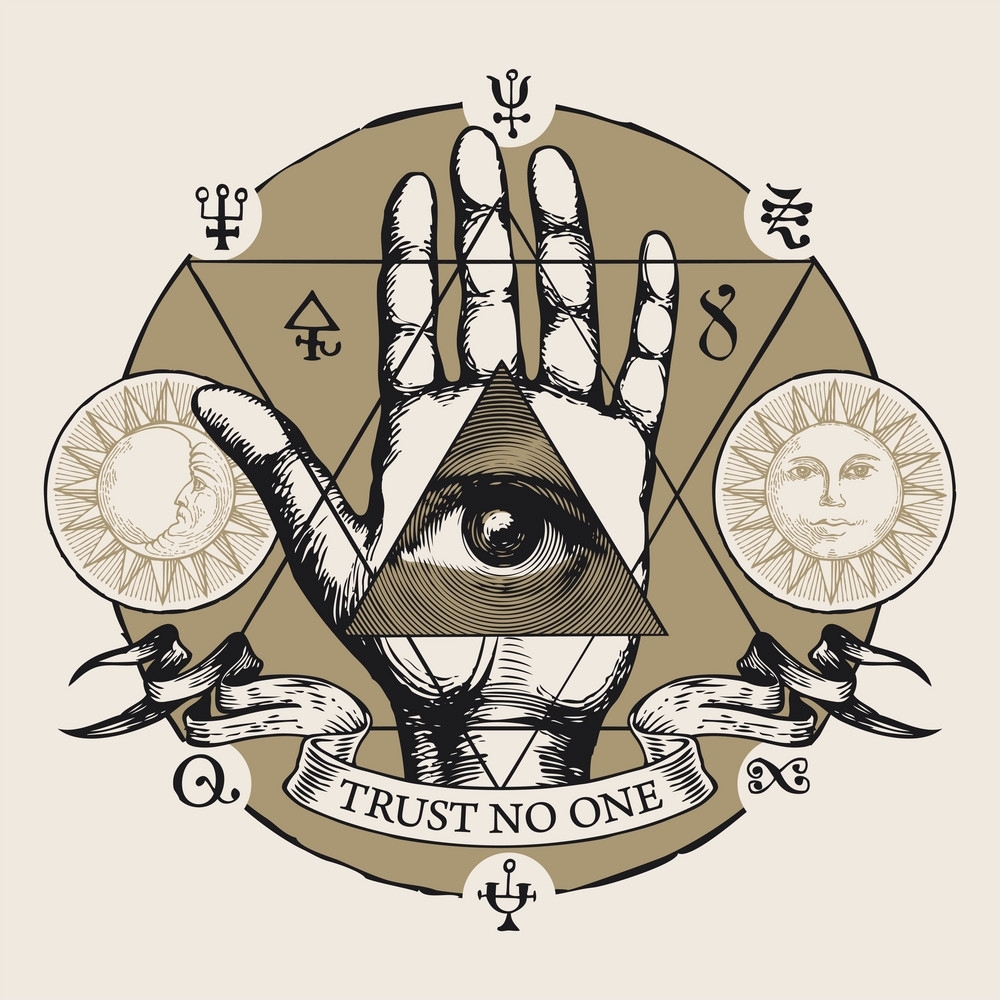The Inverted Pentagram, also known as the Pentagram of Baphomet when a goat head is drawn within the five-pointed star, is a commonly-used symbol of Satanism. It is distinct from the positively-aligned pentagram, which directs the fifth point north. The Inverted Pentagram, which directs the fifth point south, uses the upward-pointed “horns” of the star to represent the horns of the Infernal Goat. Traditionally, the name “Leviathan” is written in Hebrew within the anterior circle of the pentagram.
The version of the symbol depicted below was espoused by Anton LaVey.
However, an earlier version of the inverted pentagram, drawn by Stanislas de Guaita in 1897, included the terms ‘Samael’ and ‘Lilith’ in the very inner circle.
One can only assume LaVey’s decision to drop the Samael/Lilith statement within the pentagram was an extension of his rejection of what he considered Judeo-Christian undertones. Whatever the case, both versions survive and appear in modern Satanic practice. (Thank you to Kole Lowe for pointing out the distinction!)
The pentagram is also associated with the five elements used in magic: earth, air, water, fire, and spirit (mankind). In the positively-aligned pentagram, the northward-pointed human element (represented by the solitary point of the star) represents man’s place as an ascendant, equal of the elements and Nature. This is the rosier portrait of man’s place in the cosmos espoused by druids, Wiccans, and other right-hand path adherents. To this end, many other groups have adopted the symbol; there is a Christian variation in which the five points represent the Five Wounds of Christ, and the Hermetic version includes the Vitruvian Man.
The southward-pointed human element in the inverted pentagram represents a departure from the spiritual realm and embracing baser elemental desires, as espoused by Satanic magic, heathens, and other left-hand path adherents.
Some traditional Wiccan covens, particularly those based out of the UK, use the inverted pentagram symbol to represent second-degree initiates.
The pentagram, regardless of whether its positively or negatively aligned, is associated with the Golden Ratio in geometry:
The geometric proportions of the regular pentagram are those of the Golden Section. The Golden Proportion is one beloved of artists since Renaissance times and also to be found in post-Hellenic art and in the geomantic planning of Templar sites, being those proportions of a rectangle considered most pleasing to the eye. Here, the ratio of the lengths of the two sides is equal to the ratio of the longer side to the sum of the two sides. Or:
a/b = b/a+b = a+b/a+2b = a+2b/2a+3b = 2a+3b/3a+5b ….etc.
If a square is added to the long side of a golden rectangle, a larger golden rectangle is formed. Continuing this progression forms the basis for a nautilus spiral. The ratio of the distance between two points of a pentagram to its total width is in the golden proportion, as is the ratio of the height above the horizontal bar to that below, as is the ratio of a central part of a line to the outer part.
This ratio forms the foundation of the Fibonacci series of numbers 1, 1, 2, 3, 5, 8, 13, 21, 34, 55, 89, 144, etc. where each number is formed by adding the previous two numbers. The Fibonacci series is much found in nature in the pattern arrangement of flower heads and leaves and many flower heads and fruits themselves exhibit a fivefold symmetry.


